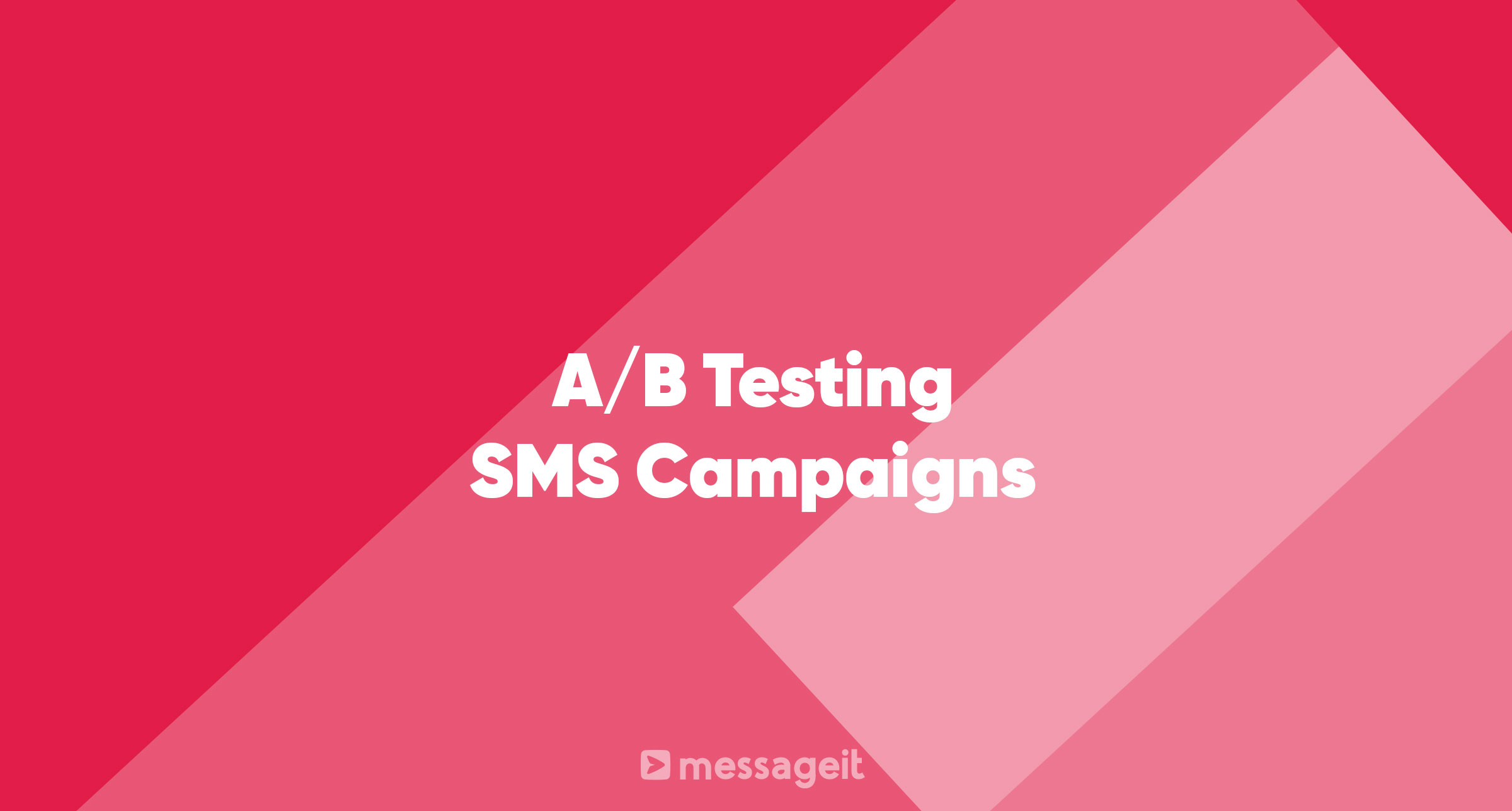SMS marketing has emerged as a powerful business tool, boasting a 98% open rate. However, to fully harness this potential, it's crucial to understand your audience's preferences and tailor your strategy accordingly. One effective way to do this is through A/B testing, which can provide invaluable insights into what works best for your specific audience. This guide will walk you through the key aspects of A/B testing for SMS campaigns.
What is A/B Testing?
A/B testing, also known as split testing, is a technique used in marketing to compare two versions of a campaign to determine which one performs better. This randomized experiment involves testing different variables in your SMS marketing efforts to optimize engagement and conversion rates.
A/B testing is a crucial part of any successful marketing strategy, and when applied to SMS marketing, it can help you understand what resonates with your audience, identify areas for improvement, and maximize the effectiveness of your campaigns.
Why A/B Testing is Important for SMS Campaigns
The essence of A/B testing lies in its ability to provide data-driven insights. By experimenting with different elements of your SMS campaigns, you can gauge what triggers your audience to engage, respond, and ultimately perform the desired action—be it making a purchase, signing up for a newsletter, or clicking on a link.
What Can You A/B Test in SMS Campaigns?
The variables you can test in your SMS campaigns are diverse and numerous. Here are some key elements you should consider:
Send Times
The timing of your SMS can significantly impact its performance. While some general trends suggest that weekday afternoons yield the best results, it's important to test various send times to identify what works best for your unique audience.
Frequency
While frequent communication can help keep your brand at the forefront of your customers' minds, bombarding them with messages can also lead to communication opt-outs. A/B testing can help you find the sweet spot for message frequency that maximizes engagement without overwhelming your audience.
SMS vs. MMS
Multimedia messaging service (MMS) can add a splash of color to your text messages, potentially increasing engagement. However, it's crucial to test whether your audience prefers plain text messages (SMS) or those with images, GIFs, videos, or audio (MMS).
Link Placement
The location of the link in your SMS can influence click-through rates. Experiment with placing the link at different positions—top, middle, or bottom—within your message and track the results.
Emoji Usage
Emojis can add a fun, personal touch to your messages. However, it's important to test whether their inclusion enhances or detracts from your message's effectiveness.
Call-to-action (CTA)
The language of your CTA can significantly impact your SMS campaign's success. Experiment with different CTAs to see which prompts the most responses.
Discounts and Offers
Offering customers discounts can trigger a positive emotional response and motivate purchases. However, it's important to A/B test different types of discounts and offers to see what your customers prefer and what drives conversions.
Message Length and Copy
The length of your message and the way it's presented can also influence its effectiveness. Experiment with different message lengths and copy styles to determine what resonates best with your audience.
Tone of Voice
The tone of your messages should reflect your brand's personality. A/B testing can help you identify whether your audience prefers a casual, friendly tone or a more formal, professional one.
A/B Testing Best Practices for SMS Campaigns
To ensure effective A/B testing, follow these best practices:
Test One Variable at a Time
To accurately determine the impact of a specific variable, only test one at a time. This way, any changes in performance can be attributed to that variable alone.
Use a Large Sample Size
The larger your sample size, the more reliable your results will be. Aim to test each variant with a segment of at least 500 subscribers to ensure statistical significance.
Repeat Tests
Running multiple tests for each variable can help confirm the consistency of your results. If a particular variant performs well in one test, repeat the test to verify its effectiveness.
Analyze Your Results
Once your test is complete, analyze the results to gain insights into what works best for your audience. Use this data to refine and optimize your SMS campaigns.
Conclusion
A/B testing is a powerful tool for optimizing your SMS campaigns. By systematically testing different variables, you can gain a deeper understanding of your audience's preferences, tailor your messages accordingly, and ultimately drive higher engagement and conversions. Remember, the key to successful A/B testing lies in its iterative nature—there's always something new to learn and improve. So, start testing today and unlock the full potential of your SMS marketing.
